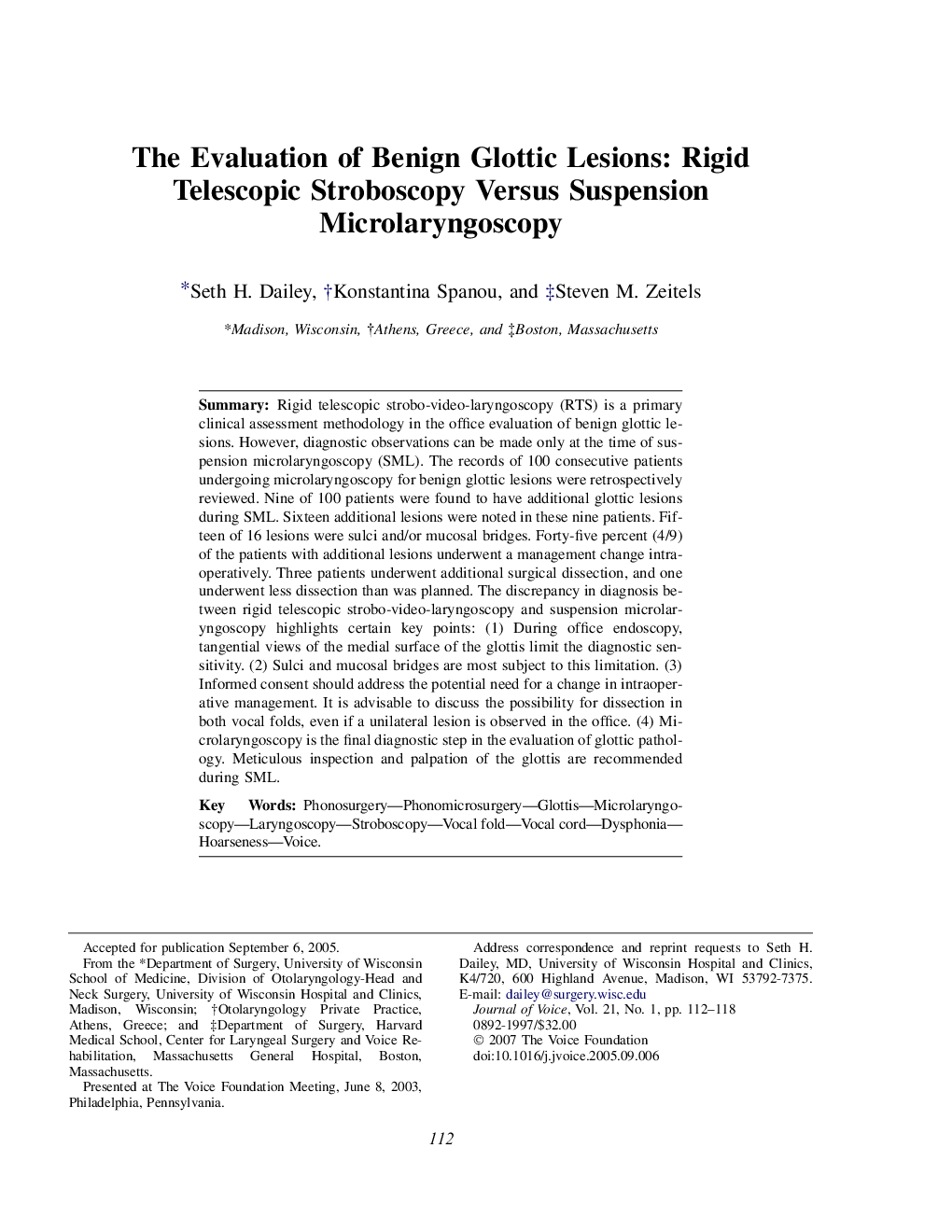| Article ID | Journal | Published Year | Pages | File Type |
|---|---|---|---|---|
| 1102923 | Journal of Voice | 2007 | 7 Pages |
Abstract
Rigid telescopic strobo-video-laryngoscopy (RTS) is a primary clinical assessment methodology in the office evaluation of benign glottic lesions. However, diagnostic observations can be made only at the time of suspension microlaryngoscopy (SML). The records of 100 consecutive patients undergoing microlaryngoscopy for benign glottic lesions were retrospectively reviewed. Nine of 100 patients were found to have additional glottic lesions during SML. Sixteen additional lesions were noted in these nine patients. Fifteen of 16 lesions were sulci and/or mucosal bridges. Forty-five percent (4/9) of the patients with additional lesions underwent a management change intraoperatively. Three patients underwent additional surgical dissection, and one underwent less dissection than was planned. The discrepancy in diagnosis between rigid telescopic strobo-video-laryngoscopy and suspension microlaryngoscopy highlights certain key points: (1) During office endoscopy, tangential views of the medial surface of the glottis limit the diagnostic sensitivity. (2) Sulci and mucosal bridges are most subject to this limitation. (3) Informed consent should address the potential need for a change in intraoperative management. It is advisable to discuss the possibility for dissection in both vocal folds, even if a unilateral lesion is observed in the office. (4) Microlaryngoscopy is the final diagnostic step in the evaluation of glottic pathology. Meticulous inspection and palpation of the glottis are recommended during SML.
Keywords
Related Topics
Health Sciences
Medicine and Dentistry
Otorhinolaryngology and Facial Plastic Surgery
Authors
Seth H. Dailey, Konstantina Spanou, Steven M. Zeitels,
